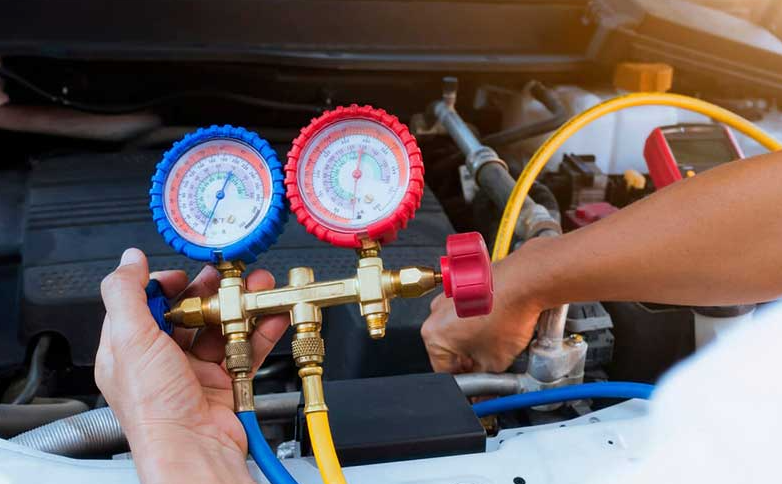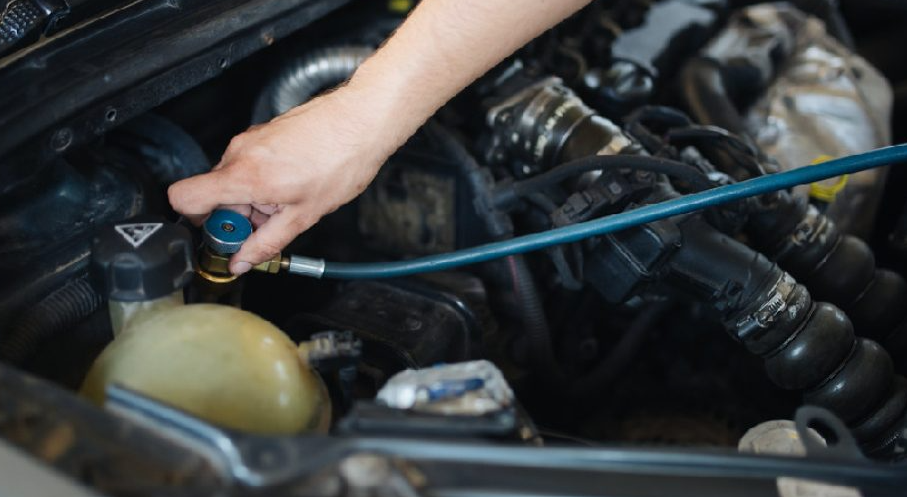How to Remove Excess Freon from Car AC: A Step-by-Step Guide
A properly functioning air conditioning (AC) system is essential for a comfortable driving experience, especially during hot summer months. However, overcharging the AC system with excess refrigerant (Freon) can lead to various issues, such as reduced cooling efficiency and potential damage to the AC components. In this comprehensive guide, we will walk you through the step-by-step process of removing excess Freon from your car's AC system to ensure optimal performance and avoid potential problems.

Remove excess freon from car ac
1. Understanding Excess Freon in Car AC
Freon, also known as refrigerant, is a crucial component of the car's AC system responsible for cooling the air circulated inside the cabin.
Overcharging the AC system with excess Freon can result from improper AC service or attempts to fix AC-related problems without professional expertise.
The excess refrigerant can disrupt the system's proper functioning, leading to poor cooling performance and potential damage.
2. Signs of Excess Freon in Car AC
Identifying the signs of excess Freon in your car's AC system is vital to address the issue promptly. Look out for these indicators:
a. Reduced Cooling Efficiency: If you notice that the air coming from the AC vents is not as cold as it used to be, it could indicate excess Freon in the system.
b. AC Cycling On and Off: Excess Freon can cause the AC compressor to cycle on and off frequently, affecting its ability to maintain consistent cooling.
c. Unusual Noises: Overcharged AC systems may produce unusual noises, such as hissing or gurgling sounds, signaling an issue with refrigerant levels.
d. Frost on AC Components: Excess refrigerant can lead to frost accumulation on the AC components, such as the evaporator coils.
3. Safety Precautions
Before attempting to remove excess Freon from your car's AC system, take the following safety precautions:
a. Safety Gear: Wear safety goggles and gloves to protect your eyes and skin from contact with refrigerant.
b. Adequate Ventilation: Perform the procedure in a well-ventilated area to avoid inhaling harmful fumes.
c. Proper Disposal: Ensure proper disposal of the removed Freon according to local environmental regulations.
4. Necessary Tools and Equipment
To remove excess Freon from your car's AC system, you will need the following tools and equipment:
a. AC Manifold Gauge Set: This set includes gauges to measure AC system pressure and connections to access the high and low-pressure sides of the system.
b. Refrigerant Recovery Machine: This device is used to safely recover and store the excess Freon from the AC system.
c. AC Refrigerant Recovery Tank: This tank is where the recovered Freon is stored temporarily until proper disposal.
d. Refrigerant Recovery Hose: The hose connects the AC system to the refrigerant recovery machine.
e. Wrench Set: You may need wrenches to access and remove the service valves on the AC system.
5. Removing Excess Freon from Car AC
Follow these steps to remove excess Freon from your car's AC system:
a. Prepare the AC System: Turn off the car's engine and let it cool down. Ensure that the AC system is completely depressurized.
b. Connect the Refrigerant Recovery Machine: Attach the recovery hose from the refrigerant recovery machine to the service port on the AC system. The high and low-pressure service ports are usually identified by different colors or markings.
c. Start the Recovery Process: Turn on the refrigerant recovery machine and follow its instructions to begin the recovery process. The machine will safely remove the excess Freon from the AC system and store it in the recovery tank.
d. Monitor Pressure Gauges: While the recovery process is ongoing, monitor the pressure gauges on the AC manifold gauge set. The pressure readings will provide information about the amount of Freon being removed.
e. Wait for Complete Recovery: Allow the refrigerant recovery machine to complete the recovery process. Once it's done, the pressure gauges will show that the AC system is depressurized.
f. Disconnect the Recovery Machine: Turn off the refrigerant recovery machine and disconnect the recovery hose from the service port.
g. Properly Store the Recovered Freon: Close the valve on the refrigerant recovery tank to prevent Freon from escaping. Store the recovered Freon in a safe location until it can be properly disposed of by a certified professional.
6. Professional Inspection and Service
After removing excess Freon from your car's AC system, it is essential to have the system inspected by a qualified professional. A trained technician can evaluate the AC system, check for any leaks or damage, and ensure that the correct amount of refrigerant is added to optimize cooling performance.

Release Freon From Car Air Conditioner
In conclusion, removing excess Freon from your car's AC system is essential for maintaining optimal cooling performance and preventing potential damage. By following the step-by-step guide and taking safety precautions, you can safely remove excess refrigerant and ensure a comfortable and enjoyable driving experience in any weather condition. However, always consider seeking professional inspection and service to confirm that your car's AC system is in top condition and functioning at its best. With proper care and maintenance, your car's AC system will continue to provide refreshing cool air during your journeys on the road.